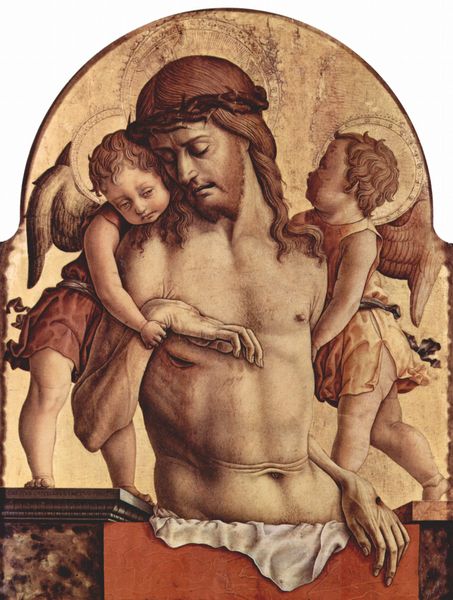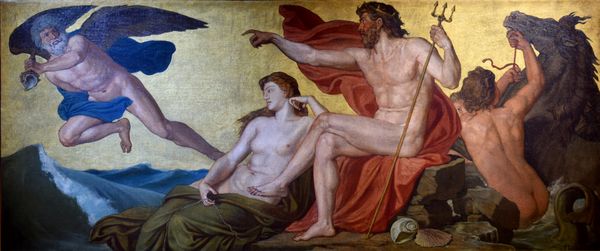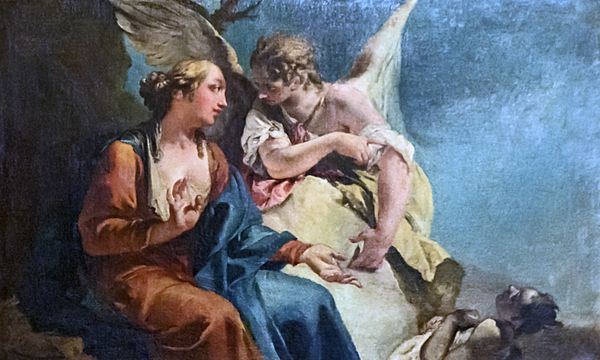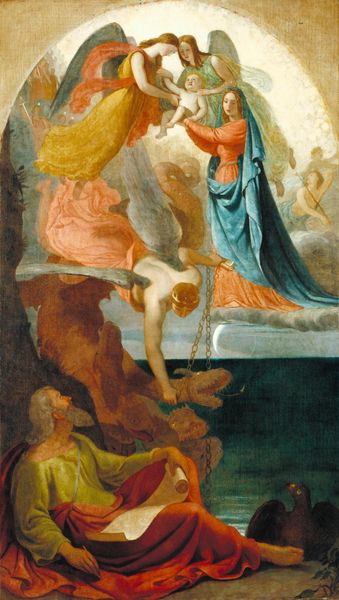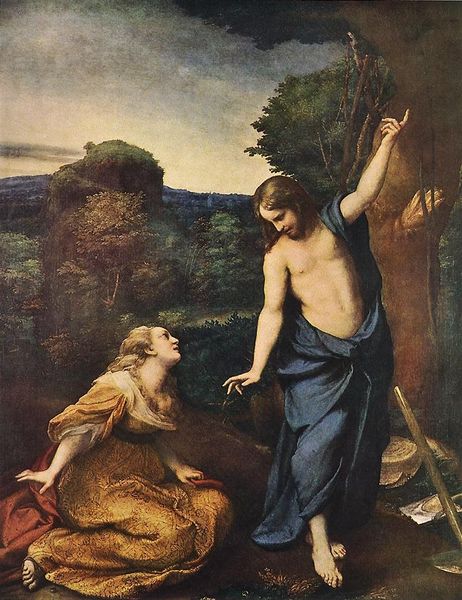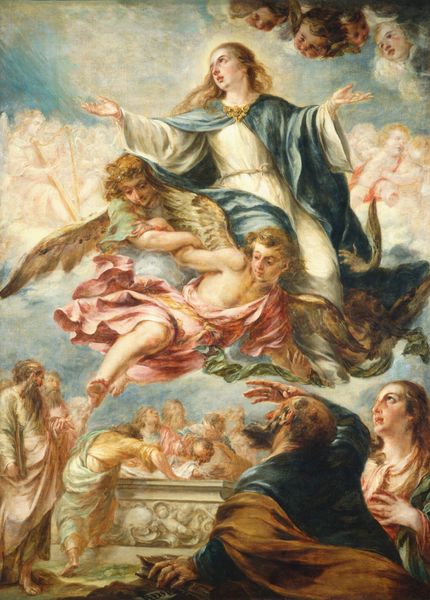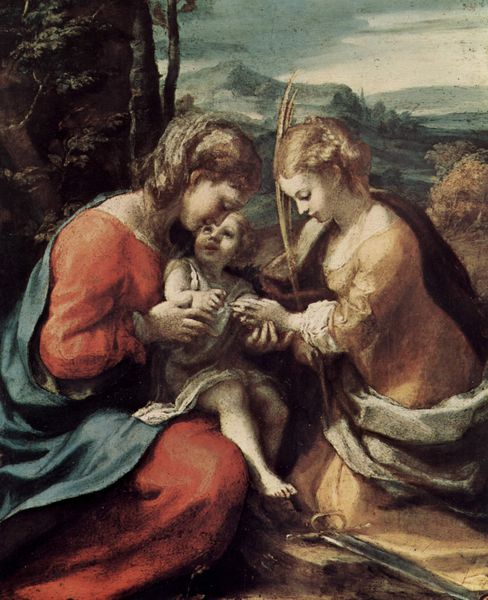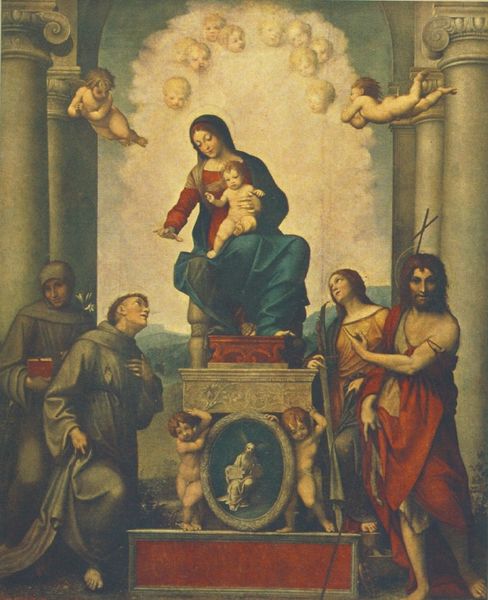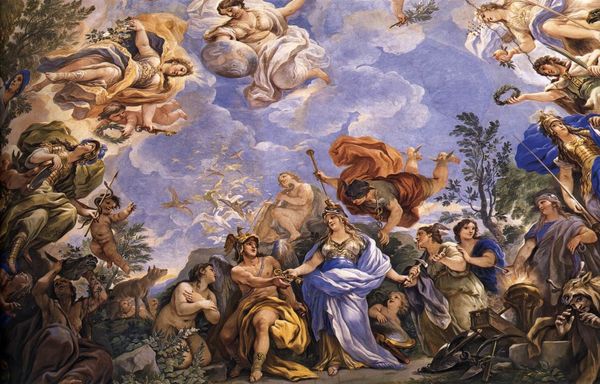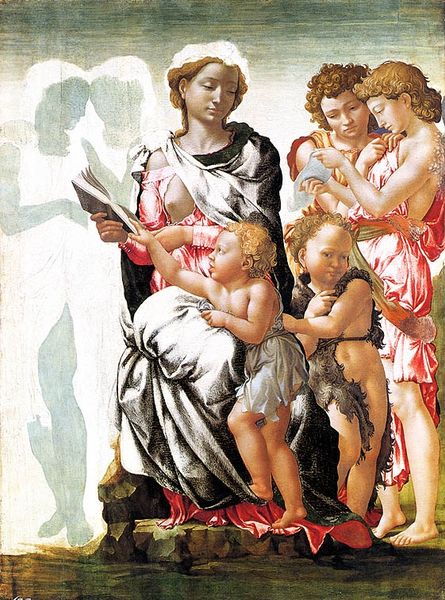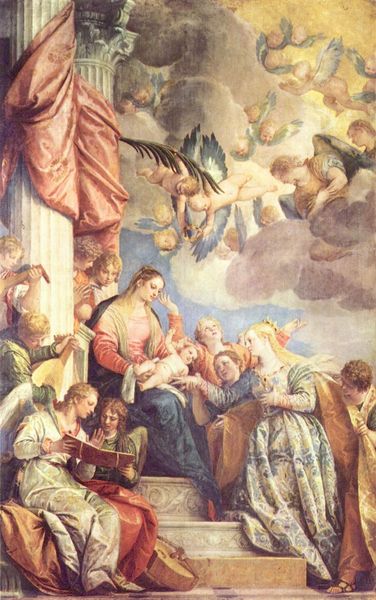
tempera
#
portrait
#
high-renaissance
#
allegory
#
tempera
#
figuration
#
oil painting
#
christianity
#
history-painting
#
italian-renaissance
#
virgin-mary
#
christ
Copyright: Public domain
Curator: This tempera artwork before us, dating back to 1522, is known as "Coronation of the Virgin", completed by Correggio, currently housed in the Parma National Gallery in Italy. I am struck by the stark contrast between the figures and the deteriorated background, emphasizing the celestial event occurring in the painting. Editor: Yes, there's an almost ghostly feel, isn't there? Like we’re witnessing a recovered memory. I immediately wonder about the placement of this "Coronation" – what space was it originally designed for? Does the perspective shift when viewed from below? Considering its theme of divine ascension and power, this seems relevant. Curator: The "Coronation" theme, portraying Christ crowning his mother as Queen of Heaven, reflects theological debates within the Catholic Church concerning Mary’s role. How does Correggio navigate those tensions, visually speaking, particularly when considering the burgeoning reformation movement? Editor: Absolutely. In "Coronation of the Virgin", the way Mary averts her gaze suggests that her power is given, not seized; power is not inherent. It emphasizes her piety, humility, and devotion rather than the exercise of free will or any challenge to male power. She is a figure through which a lesson on power can be illustrated and perpetuated. Curator: Interesting! The presence of the dove representing the Holy Spirit completes the Trinity. Notice the artist’s attention to classical form within a Christian context. Correggio was definitely influenced by the Renaissance emphasis on perspective and anatomical correctness. How do we situate his emphasis on form in relation to the function of art? Editor: Perhaps it’s worth considering whether beauty becomes another method for securing adherence to religious dogma. Art and aesthetics can distract or inspire, both of which are useful in shaping one's ideological beliefs. I'm thinking of the painting's potential performative function: what kind of viewer did Correggio imagine interacting with the "Coronation?" Curator: I find this work invites many questions, which ultimately is the purpose and joy of such great works. I leave with a broader awareness of Correggio and Renaissance society’s attitudes toward the ever-contested construction of faith and devotion. Editor: I leave considering the complex politics that imagery like the "Coronation" negotiates and perpetuates; power is very much a function of careful performance.
Comments
No comments
Be the first to comment and join the conversation on the ultimate creative platform.
